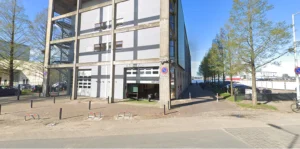What are shin splints
Shin pain is discomfort in and around the shinbone and surrounding muscles and tendons. You may feel pain at the inner edge or front of the lower leg. Sometimes there is tibial membrane inflammation also called medial tibial stress syndrome, popularly called shin splints. With more severe stimuli, a stress fracture tibia or a small tear in shin splints may occur. Muscles that play a role include tibialis anterior and tibialis posterior and the calf muscles that together balance the tibial muscles around the bone.
Symptoms of shin pain
- Shin pain when walking or cascading pain during a workout
- Shin pain after running or stiff start pain the morning after
- Stitches in shin when accelerating, jumping or descending running terrain
- Localized pressure pain on the inside of the tibia or a shinbone bruised feeling after bumping
- Nerve pain in tibia with tingling or burning sensation along front side
- Cramping tibia at rest and tightened skin at higher loads
Recognize these signs. Get your symptoms assessed early. Starting early accelerates recovery.
Causes of shin pain
The cause is often a mix of training, recovery and strain. Building up quickly with lots of miles or hills, hard surfaces or worn shoes will cause extra pull on the periosteum. Shin bone pain running and pain in shin bone after running are often seen with excessive strides or little trunk strength. A shin bone bruise from bumping can cause a bump on shin bone after bumping. In case of persistent swelling or a hump on shin, you can consult reliable education like hump on shin home doctor or call your family doctor. Skin factors such as eczema shin or an itchy shin sometimes play a role. When fluid builds up, people talk about fluid on shin or fluid in shin, especially after a bruise.
What you can do yourself
- Temporarily reduce your running volume and alternate walking, cycling and strength gently
- Schedule short exercise breaks and choose soft surfaces to distribute stimuli
- Cool briefly immediately after a strain or bruise and then warm up gently
- Check shoes and possibly adjust your stride frequency to short and light
- Perform gentle strength exercises for foot arch, calf and shin muscles
- Does pain increase or continue to recur. Schedule an intake
Research and treatment at The Physio Man
We start with an intake and analysis of your load, surface, footwear and technique. We test strength and coordination of foot, calf, shin and hip and assess your walking and landing pattern. This is how we determine if it is a tibia injury in the soft tissue area, tibia pain walking due to overuse or signs consistent with a stress fracture tibia.
A treatment program usually consists of
- Targeted exercise therapy for strength, stability and coordination of foot, ankle and hip
- Building schedule for walking and running with clear pain limits
- Technique advice on stride length, cadence and landing style
- Tissue and mobilization techniques around tibia and ankle as needed
- Self-management with measurable milestones so you build symptom-free
Exercises that help
- Short calf and foot arch activation by gently rising and falling on the forefoot
- Forefoot lifting sitting or standing for the anterior tibial muscle
- Balance exercises on one leg with soft knee for hip and ankle control
- Short step walk with attention to relaxed landings
Shin taping can provide temporary support during build-up, but does not replace targeted training.
Skin and soft tissue around the tibia
A wounded tibia does not heal or a warm inflamed tibia with obvious inflamed tibia symptoms requires medical evaluation. Persistent or unexplained hard tissue requires a physician to rule out bone tumor tibia or other causes. A small tibial bruised area often produces fluid tibia and usually goes away on its own.
When immediate help is needed
- Sudden inability to support after an obvious snap or visible position deviation
- Nighttime pain, rapidly increasing swelling or fever
- Sharp local bone pain that does not recover with rest, suspected stress fracture of tibia
- Persistent wound that does not close or signs of infection
When these signs appear, contact your family doctor or emergency care. Walking with a broken tibia is not a good idea and always requires acute medical attention.
Frequently Asked Questions
Why do I have pain in shin when walking or running
Usually due to building up too fast, little variation in surface or technique with long strides. With adjustment of cadence and focused strength, pain in tibia when walking and tibia pain running reduces.
How to know the difference between shin splints and a stress fracture
Shin splints often gives a longer area of tenderness and warm gets better. A stress fracture tibia gives sharply localized bone pain that increases with load and often remains at rest. Have this assessed.
Can I train with a bruised tibia
With a bruised shin, opt for calmer loading, cooling shortly after the injury and rebuilding later. Forcing it prolongs recovery time.
What does nerve pain in tibia mean
A tingling or burning track can fit local nerve sensitivity or a stimulus from the back or ankle. With targeted mobility and direction, this often decreases.
Your next step
Don’t stick around with pain or uncertainty. With a clear diagnosis and a smart plan, you can safely build up to walking and running without symptoms.
Make an appointment at The Physio Man now and work with us to build strong, resilient and pain-free shins.
Share this article:


